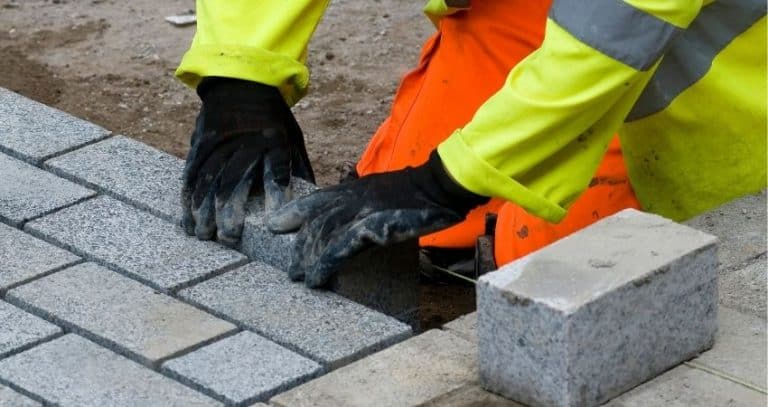Average Driveway Lifespan: (With 20 Real Examples)
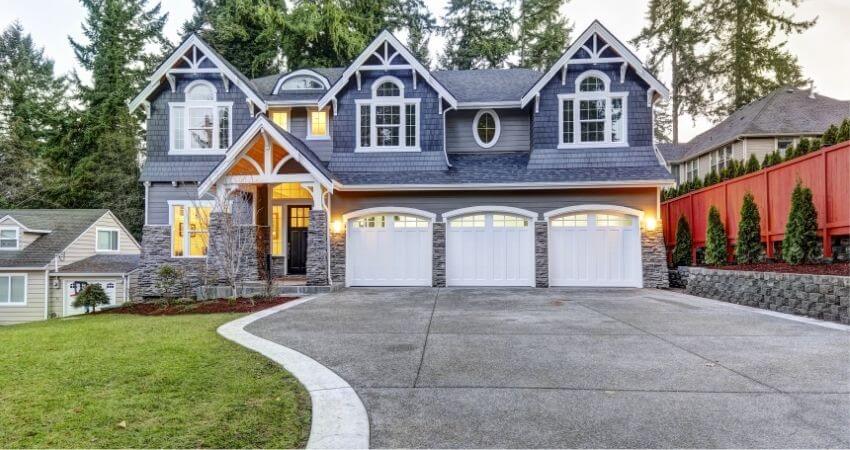
A healthy new driveway is a considerable investment for your assets, so you’re probably thinking about how long you can expect your new driveway to last and keep looking fine. The solution isn’t as straightforward as you would have thought. The longevity of blacktop driveways relies on various variables, each of which influences its life period.
The term driveway emerged as the designation for the location where you drive your car into the property.
So, since it is the route for cars to take from the main street to the positions where they can be parked at home or company, it can be more convenient.
So, let’s get to discuss the average driveway lifespan.
Average Driveway Lifespan: (With 20 Real Examples)

Needed tools for driveways
Every construction work needs prefered tool. There are some tools which you can buy from amazon to do this work. For example:
You will find a fantastic collection of high-quality instruments here.
What is a driveway?
A short lane leading from a public road to a house or other structure is a driveway. A driveway is a private road for local access to one or a small number of buildings, and a person or group owns and manages it. Driveways seldom have traffic lights, although some hold heavy traffic, especially those that lead to commercial establishments and parks.
Sealing your driveway
The sealer can be applied only in the humid, summer months and at least 36 hours when it is not expected to rain. Don’t add the sealer until the temperature for the next 24 hours is above 60 degrees.
Begin by barricading the driveway against traffic and washing the surface with power. Put on old clothes before applying the sealer, then tie your feet with plastic bags to secure your shoes.
It’s time to get to work until you have all of the resources. Checking the forecast is the first thing that you ought to do. Select a day where the temperature will be between 50 and 90 degrees, and in the upcoming outlook, there will be no rain. It will take two days to dry, which is why it’s so important to make sure that during that time it won’t rain.
Next, clean the driveway of all the dust, grit, soil, and leaves to get rid of the garbage. Besides, make sure you patch any holes so that water and dirt do not come in before covering the asphalt. Before washing it, you shouldn’t put a band-aid on a wound, and you shouldn’t seal a driveway with massive cracks.
Types of Driveways

Now let’s have a look at the types of driveways you can make and find. Each has its uniqueness. We hope this information will help you.
Asphalt Driveways
A very famous material that you can find people using fit should be there or their driveways into their concrete cousins, asphalt driveways offer many perks. De-icing solutions can cause a faster breakdown makes it look tidy and presentable for the driveway.
Aa beautiful asphalt driveway would look enticing on your house, and when parking your cars on it, you will have a good experience. The other major bonus is that having an asphalt driveway built is very cheap.
In just a few hours, the asphalt dries and sets. Asphalt is also a readily repairable commodity that has vital longevity in conditions that change temperatures. Unfortunately, asphalt needs resealing and frequent resurfacing after 3-5 years.
Concrete Driveways
One of the most common driveway types is concrete driveways. Owning an excellent concrete driveway has many outstanding advantages. The most obvious reason people so often prefer these driveways is that they last a very long time. A concrete driveway is highly robust, and as a result, without needing to make maintenance or have a new one built, you will be able to use it for several years.
However, for concrete driveways, several detrimental characteristics should be addressed. E.g., a concrete driveway is very susceptible to being stained. If you decide that, you want to change the oil in your vehicle when parking in your driveway, you would need to be very careful not to spill something. It’s going to smear if you spill gasoline on an asphalt driveway, ten to build a real-time trying to wash it out.
As long as the concrete driveway is built, correct should be their city, for years to come. The only downsides of concrete are that it quickly stains, and de-icing solutions can cause a faster breakdown. Furthermore, the drying process could take a few days, which would mean that the driveway will not be used at that point. To learn more about heated driveway systems, including those created from concrete, visit this website.
Gravel Driveways
Every loose rock or stone larger than sand but smaller than cobble, which means it can vary from around 1/10 inch to 2.5 inches in diameter, can be referred to by the term gravel. However, the stone used for driveways is generally a refined substance that consists of rocks, sand, and clay.
Over simple rocks, this combination has a significant benefit in that it compacts even more comfortable to establish a solid surface. Though coarse gravel or stone paving is intended to allow water to pass through it, most gravel driveways, like solid paving materials, are designed to shed water.
With the ease of installation, the advantages of gravel driveway pavers continue. It takes several days to install and perfect the standard driveway. However, TRUEGRID’s gravel pavers allow you to complete in less than one day the construction of your brand new driveway. That means in the morning you will receive your driveway pavers and be ready by sunset to park your vehicle on them.
Brick Driveways
For thousands of years, clay brick has become a standard construction material used to build walls and paths, sidewalks, and courtyards as paving surfaces. There is nothing more beautiful than a brick-paved driveway, walkway, or patio.
While concrete pavers are much more rigid and more resilient than clay brick, as long as they are spread on a good foundation and maintained regularly, classic brick can still easily withstand everyday driveway use.
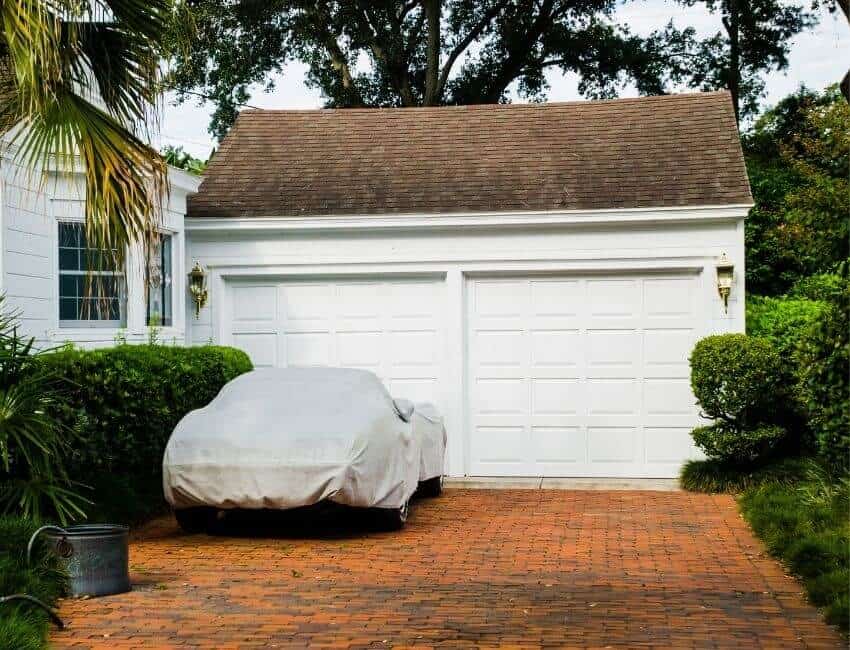
For about $5 per square foot, you should be able to obtain the materials needed for a brick paver driveway. The labour will be free if you do the work yourself. Professional installation may start at around $10 to $20 per square foot, but fancier designs and pricier bricks will push the price higher.
You need to ensure that brick driveways are well built, although. If something is done inappropriately, you will have a hard time using your brand brick driveway. You want it to look perfect and work well, so you’ll want to recruit experts to build this sort of driveway in most situations. If you intend to do it yourself, so please be sure to handle matters correctly.
Stamped Concrete Driveways
A stamped concrete driveway and other paving materials provide several decorative choices that are not feasible. You can make cost-effective, accurate replicas of standard products, such as cobblestone, brick, natural slate, and flagstone, using stamps paired with colouring agents.
Stamped concrete is difficult to beat from an artistic perspective regarding pattern and colour choices, which are nearly limitless. Many individuals get inspired by f their local landscape or home’s architectural style and superior designs and colours that combine with existing brick, tile, or textured concrete elements.
The length of upkeep and life would, therefore be the same as standard concrete driveways. In cases where the aesthetics and expenditure are essential to the customer, stamped concrete would usually be used. For starters, if you are looking at a brick driveway and the price is just too high, it would be a perfect way to get the best of all worlds by stamping the concrete to imitate bricks.
Green Lawn Driveways
Grass pavement construction is so simple; it’s almost unfair. “The plastic grids interlock like modular building blocks and are slapped for support and detention on top of a sub-base of 5/8” angular rock. You can get thousands of cubic gallons of added detention space on your house, depending on how thick your sub-base layer is. You’ll enjoy it, and so will the local government. For prior coverage, you can also apply for tax incentives.
V The alternative of plastic underlay would probably be the most enticing, though. It’s going to look like you’re just parking yourself on the lawn, but it’s going to work well. It will work to park your vehicles on this kind of floor, but it might not be as seamless an experience as anything like a concrete driveway. For this cause, it is only very desirable to a small group of individuals who want it to be as green as possible.
Grass pavers are practically maintenance-free and rebuilding the grid is as simple as disconnecting the grid, solving any sub-terrain problem, and rebuilding the grid if there is any minor problem.
Tar and Chip Driveways
Tar-and-chip paving behaves like concrete but uses a different method of construction. The soil is laid down and compressed by successive dirt, hot liquid bitumen asphalt, and more loose stone.
Although gravel makes the driveway’s surface cheaper, tar-and-chip provides a more rigid, more durable surface, but it is much less stable than concrete. For concrete, tar-and-chip paving can last as long as ten years vs 40 years or so.
With tar-and-chip driveways, little maintenance is needed. By spraying additional hot bitumen and loose stone, the surface can be recycled every ten years.
Unlike asphalt paving, which is so widespread that installation companies are numerous, you can have difficulties locating a company specialised in tar-and-chip driveway installation. And this is not a project that is DIY-friendly. Do any internet hunting to see if you can identify anyone in your field with the requisite expertise and equipment before being too dedicated to using tar-and-chip on your driveway.
Crushed Stone Driveways
For anyone wanting to add a touch of aesthetic flair to their driveway without breaking the bank, crushed stone is a perfect material. Before leaping into anything, though, it is necessary to study such investment pros and cons. Here’s an overview of some of the pros and cons surrounding a crushed stone driveway to assist with that.
Typically, crushed stone driveways are composed of stones and pebbles, separate from asphalt, so sand and clay materials are not used. This would make it a little more sophisticated in its appearance. Snow removal can be complicated, and the rocks will move with time, which will make it possible to put down even more rocks, but it will be relatively inexpensive to sustain. It can kick up some dust close to gravel and accumulate gems on the lawn beside it, but it should not be a challenge for long country driveways.
Crushed Basalt Driveways
In driveways, basalt is occasionally used in the form of crushed rock or pavers. Its black, creamy paint is robust and thick, offering a remarkably appealing driveway, but it also ensures the weeds stick out against the dark rock very sharply.
Try what you might already have in your kitchen cupboard if the weeds are widespread, salt or vinegar. Salt on all other plants destroys the soil. For this purpose, it is a safe approach to use on driveways, just make sure that you do not get any salt or saline water n adjacent, desirable trees. Vinegar is not going to damage soil, so it’s going to kill surrounding trees, so take the same care when spraying vinegar—better it’s to get a still day without wind so that the spray doesn’t drift.
Except if there is continuous snow removal, the functionality of the crushed basalt is powerful. The good thing about crushed materials is that they need slim to no replacements when there is no way to crack them, any stones fall out or get stuck to something is the worst that can happen. This driveway should be good to go for as long as you are, with the occasional tossing down some more stuff
Dirt Driveways
For more rustic or country areas, dirt driveways are most fitting and are, in practice, not allowed in specific suburban communities through zoning laws. Checking the state laws before agreeing to install a gravel driveway would be smart. Besides, on steep slopes, where heavy rain and harsh winds will wash the soil away and deform the surface more quickly than on flat terrain, they are inefficient.
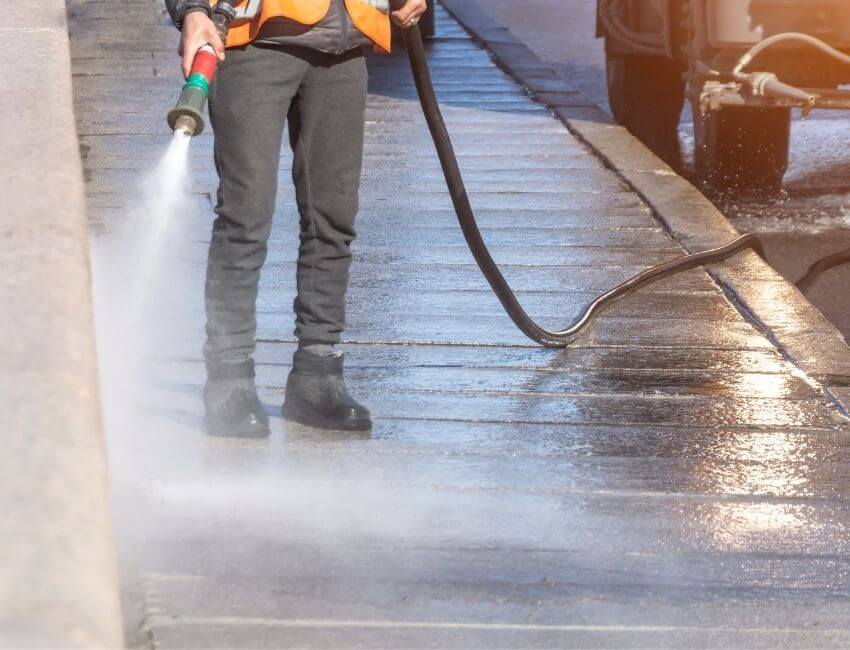
There are some drawbacks to this straightforward solution to a driveway. Where the soil and the rain are, the mud is. When the rain starts to come in, a gravel road can turn into a mud driveway that will cause to cause small cars. Even, gravel driveways are going to be, yeah, a little dusty. In the wind, dust can fly off or when cars drive over it.
People often start with a dirt driveway and add stone or gravel to the top to add additional stabilisation until they have more cash to spend on the project. Similarly, a paved driveway would be a quick and straightforward alternative, in which case the area is only paved with grass instead of gravel.
Cobblestone Driveways
The original cobblestone pavers were rounded stones collected from stream beds, naturally occurring. They were distinct from the quarried and moulded paving stones, often known as settings or Belgian blocks, now widely sold as cobblestones. Today, any paver made of natural stone has come to mean the term cobblestone, particularly the rounded Belgian blocks that are by far the most common type. The benefit of this style of cobblestone is that its size and shape are relatively uniform, making them much more straightforward to build than rounded cobblestones.
Brick is a reasonably costly material, generally speaking, to work with. So it may put some people off the idea of having to spend a little more money than installing a cobblestone driveway. When they are built right, these driveways look very fancy. It could wind up working well with all you have going on, depending on the kind of property that you have.
A cobblestone driveway should be considered for someone who wants to build a distinctive look in their house. It might not be the best choice for everyone, but it may be a perfect one for you.
Paver Driveways
The first decision is to determine if the driveway would be impervious or permeable. A conventional paver driveway may be waterproof, but the construction of a permeable paver driveway has multiple advantages. Water can never accumulate on the floor, and a heating element can also be mounted under the pavers. Some states and municipalities also provide grants or tax incentives to install permeable driveway pavers because the system decreases the pressure on urban collection systems for stormwater and helps eliminate pollutants to increase local water quality.
For standard residential driveways, a running bond or basket weave pattern can operate. However, it is advised to avoid long, straight lines for heavier traffic areas, such as commercial driveways or common areas subdivided.
Using pavers made of concrete shaped into the shapes of bricks is the most common choice for paver drives. Usually, concrete paver driveways have greater longevity than clay bricks, with lifespans ranging between 25 and 50 years being typical. Concrete pavers are marginally less efficient than the driveways with brick pavers, but their strength level of 8,000 pounds per square inch is entirely adequate for everyday use. Driveways with concrete pavers are safer than solid concrete slabs.
Mixed Materials Driveways
If it’s a tough job for you to choose only one, then a mixed material driveway might be the right match! You can pick and blend any particular type of driveway from a mixed material driveway.
Maintenance and length of life of the driveway will also differ considerably depending on the materials, so it will be necessary to study each material before picking. You will need not to harm one of the surfaces if one of the materials stretches and contracts with the wind and another layer remains securely in place.
Recycled Glass Driveways
The design of the recycled glass components used is environmentally sustainable for recycled glass driveways, which can be a big plus for those who wish to preserve the world. The resin in the mixture will add to the substance a significant longevity component, making the driveway maintenance slim to none.
Australians are studying recycled glass hybrid roads in Victoria. They will eliminate the use of virgin materials such as river sand by mixing reclaimed tumbled glass into asphalt to conserve these natural resources while minimising the amount of glass waste.
It’s a fair $9 to $18 per square foot when it comes to the expense of an environmentally sustainable, beautiful commodity. This option can be preferred in specific environments as it is not a ridiculously high price and can bring a lovely touch to every landscape design.
Glass Driveways
Few people would conceive of a glass driveway, but there is a growing trend in designing glass driveways towards using this material. Know the glass driveways are not as you would first imagine until you picture a see-through driveway with porous window glass or even the thicker, shatter-resistant glass used over the boards in hockey rinks.
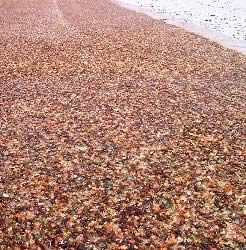
For those interested in providing an environmentally friendly solution to concrete and asphalt driveways, glass driveways are most fitting. By selectively selecting only glass in those shades, a professional contractor might also adjust the colouring slightly. It is necessary to tumble the glass to whittle down sharp edges and make it as harmlessly blunt as gravel to walk or drive over.
Combination Driveways
Two or three of the above components are used on individual driveways. Usually, one material is appropriate for the boundary and the other for the driveway.
Straight Driveways
A straight driveway is just the way it looks, straight ahead. These can be used where there is a short distance, usually a small yard, from the street to the garage. Although not occupying so much of the valuable yard area, this will keep the driveway usable and straightforward.
These driveways are super easy to make, and if you’re thinking about doing it yourself, they don’t take as much preparation. A straight driveway could be the only real choice, depending on your property style.
U Shaped Driveways
Integrate the landscaping with the rest of the landscaping of your home inside and around a U-shaped driveway. You are using a similar paint scheme, some of the same trees, and the same general types of flower beds and borders that exist everywhere in your front yard. Resist the temptation to line your driveway or loop the u-central shape’s space, as this would only accentuate the driveway itself instead of concentrating on your home’s entryway.
U-shaped driveways, shaped like a U, are also as they look. These driveways are also useful since a driver does not need to pull out of them. U-shaped driveways would have two street entry points.
Curved Driveways
Curved drives are one of the most common configurations for driveways. This construction option, often called a horseshoe driveway, has an entry on the road, rounds off as it enters the property, and then has a separate exit lane leading back to the road. The teardrop driveway is a common variant on the circular driveway.
It must be held in mind when constructing a curved driveway because several different styles of vehicles and drivers will continue to use that driveway in the future. This would mean that you want to avoid sharp bends or curves that are too close to the driveway’s entrance or exit points.
Y Shaped Driveways
With one arm heading into the garage, the Y-shape driveway forks, and the other arm turns into a walkway to the front entrance.
This can be where there are two garages or a driveway and anything like an extra spot to park and an RV or a cruise. If you have children who want a basketball hoop, it may also be a fantastic idea.
Maintenance of Driveways
Its lifespan is influenced by the type of cars used on your driveway. Long-term parking of heavy vehicles on an asphalt driveway can lead to asphalt sagging, especially in hot weather, resulting in poor drainage and early degradation. It’s also necessary to keep heavy vehicles like garbage trucks away from your driveway.
Over-watering lawns at the edge of the driveway may also cause issues, especially in soft soils. Any of the asphalt may be melted by oil or fuel leaks, leading to problems. Unrepaired cracks also allow water penetration to create low spots and potholes, especially in the wintertime freeze/thaw cycle.
Importance of Driveways
When visiting your house, a driveway is the first thing a potential buyer sees and should be invested in accordingly.
It’s quick to ignore a driveway at first sight as just a spot for cars. Parking space comes at a premium, making an expansion suitable in this regard to an existing driveway.
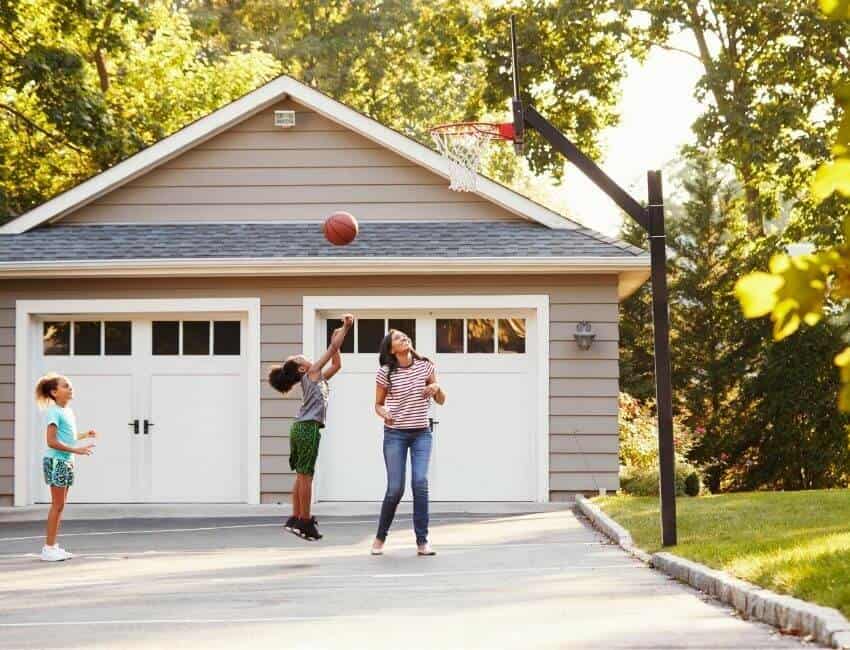
In this situation, to fit two cars, an existing driveway can be conveniently expanded, freeing up the garage to be re-purposed for another project.
Detailed thinking and design for irrigation would require a well-planned driveway.
Driveways are sometimes taken for granted and are often an afterthought, however for homeowners and business owners alike, a well-planned driveway has proven to be quite essential. A lot of effort and thinking needs to go through the planning process to have a driveway that can survive everyday use and has the potential to last for several years.
If you plan to park cars next to each other, not just the vehicles, doors opening and individuals walking between them would need to be large enough to fit the driveway. If a long driveway is suitable for you, make sure that there is ample room for cars to turn around at the top so that the driveway length is stopped from backing down.
Some Important FAQs
Please go through this question and answer part. These will assist you in understanding the topic above.
- How long does a driveway last?
Depending on the nature of the installation, the environment, the use they get, and how well they have been managed, asphalt driveways usually last 12 to 20 years. The better care you take of your asphalt driveway, like most anything else, the longer it will be in operation.
- What kind of driveway has the most extended duration?
The old standby for driveways is asphalt. For two significant factors, most suburban homes opt for this material: concrete is usually the longest-lasting driveway surface, and it is virtually maintenance-free if adequately built.
- What is the cheapest surface for driveways?
The cheapest and most lasting of these four traditional driveway products in aggregate or gravel.
- What will be the safest driveway to have?
When it comes to building a new driveway, asphalt is another standard option. Cost: The construction of asphalt driveways is cheaper than concrete driveways. Therefore, asphalt is an option for those looking for a substantial driveway features but at a lower rate.
- How can I repair a muddy, cheap driveway?
Using TRUEGRID permeable pavers is the perfect way to repair a dirty driveway. TRUEGRID’s permeable pavers are an affordable, reliable, productive, and long-lasting alternative for muddy driveways.
Conclusion
New methods and materials have led to improving driveway lifespans as well. Generally speaking, driveways are small private roads leading to a house or garage that a person or community manages.
A driveway on large properties can be the lane that leads from the public highway to the property, probably with a gate in between. Different homeowners share some driveways.

I’m a concrete contractor by trade and have been working in the industry for over 25 years now. I’ve seen (and done) it all when it comes to concrete, and I love sharing my knowledge and experiences with others who are interested in learning more about this amazing material. In my spare time, I enjoy spending time with my family, fishing, and watching NASCAR races.

